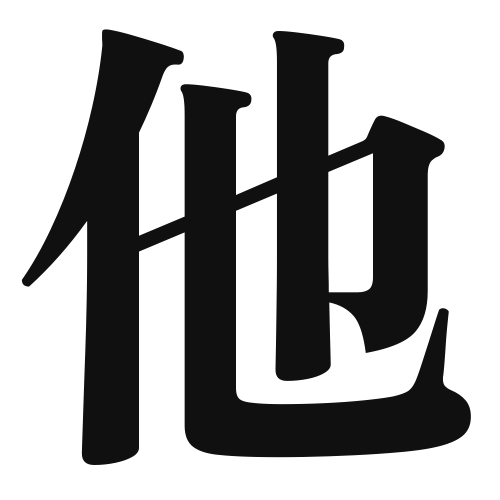1. Overview of Meaning
The kanji “他” (ta) means “other” or “another.” It is used to refer to something or someone that is different from the one being discussed or considered.
2. Formation and Radical
Formation of the Kanji: The kanji “他” is a combination of the phonetic component “也” (ya) and the radical “人” (hito), which means “person.” It is classified as a 形声文字 (keisei moji), or phonetic-ideographic character, where the meaning is derived from the radical and the pronunciation from the phonetic component.
Radical: The radical of “他” is “人” (hito), indicating its relation to people or persons.
3. Examples of Usage
Common Words and Phrases:
- 他人 (たにん, tanin) – others, other people
- 他の (ほかの, hoka no) – other, another
Example Sentences in Daily Conversation:
- 彼は他の人と違う。 (かれはほかのひととちがう。) – He is different from other people.
- 他の選択肢はありますか? (ほかのせんたくしはありますか?) – Are there other options?
4. Synonyms and Antonyms
Similar Kanji:
- 別 (べつ, betsu) – separate, different (focuses on distinction)
- 他者 (たしゃ, tasha) – others (more formal, often used in philosophical contexts)
Antonyms:
- 同 (どう, dou) – same (indicates similarity)
- 自 (じ, ji) – self (refers to oneself)
5. Cultural and Historical Background
Relation to Japanese Culture: The concept of “other” is significant in Japanese culture, where group harmony is often prioritized. Understanding “他” helps in recognizing the importance of individuality within a collective society.
Proverbs and Idioms:
- 他人の空似 (たにんのそらに, tanin no sorani) – “a resemblance to others,” often used to describe someone who looks like someone else.
- 他を思いやる (ほかをおもいやる, hoka o omoi yaru) – “to think of others,” emphasizing empathy and consideration for others’ feelings.
